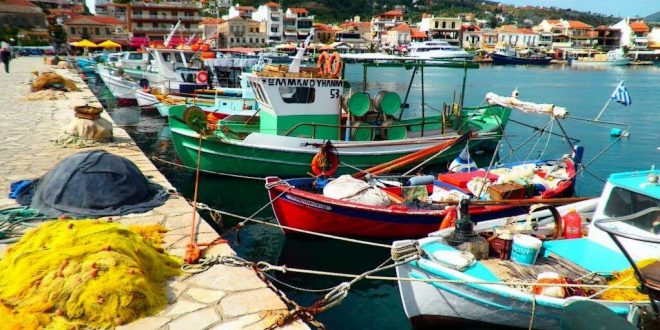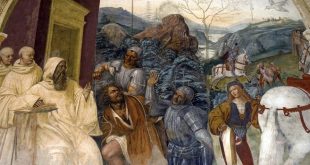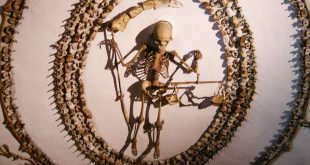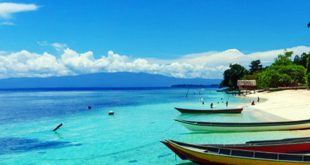 Departing and arriving by sea from Italy to Greece, you’ll find a handful seven small islands, located right at the entrance of the Gulf of Patras. In the history of these islands there is only one time fixing the reputation of this place: October 7, 1571 (when a Christian fleet walked resolutely toward the mouth of the Gulf). Astakos is located in the center of a picturesque bay which is enclosed by a small archipelago, the Echinades. The best time to visit Astakos is summer, using the connection to the beautiful island of Kefalonia. Three roads lead to Astakos. You can drive coming from Karaiskakis (or from Mitikas, using the road on the promenade). If you love adventure, better that you are using the road from Paleomanina (turn off the navigation system and be guided by what you see). If you want to ask questions to passersby, remember that saying “dexia” will say right, and saying “aresterà” left.
Departing and arriving by sea from Italy to Greece, you’ll find a handful seven small islands, located right at the entrance of the Gulf of Patras. In the history of these islands there is only one time fixing the reputation of this place: October 7, 1571 (when a Christian fleet walked resolutely toward the mouth of the Gulf). Astakos is located in the center of a picturesque bay which is enclosed by a small archipelago, the Echinades. The best time to visit Astakos is summer, using the connection to the beautiful island of Kefalonia. Three roads lead to Astakos. You can drive coming from Karaiskakis (or from Mitikas, using the road on the promenade). If you love adventure, better that you are using the road from Paleomanina (turn off the navigation system and be guided by what you see). If you want to ask questions to passersby, remember that saying “dexia” will say right, and saying “aresterà” left.
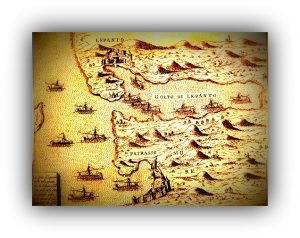 Here, in 1407, a town was in the hands of the Venetians, but in 1499 it was conquered by the Turks. Again retaken by the Venetians in 1687, then again from in 1699 Turks, remaining at these until 1828. His name is Naupactus, a Greek city on the northern coast of the Strait that separates the Gulf of Corinth from that of Patras, but his medieval name was Lepanto. May 20, 1571. After the loss of Nicosia and the siege of Famagusta, Venice joined a coalition against the Turks, associating its fleet with those of the Church and Spain. Over 200 ships assembled at Messina, where prevailed the Venetian thesis that was looking for a quick and decisive battle against the Ottoman fleet. The mouth of a gulf at Curzolari islands, October 7, 1571 there was the battle of Lepanto. That place where 8000 Turks (and about 10,000 prisoners were killed), now in the region Aitolia kai Akarnania Greece. Mehmet Ali Pasha (their leader), had destroyed 50 ships, and 117 were captured. The Christian Coalition lost 15 galleys, and 7500 men died. That victory phosphate legend Ottoman Empire invincibility.
Here, in 1407, a town was in the hands of the Venetians, but in 1499 it was conquered by the Turks. Again retaken by the Venetians in 1687, then again from in 1699 Turks, remaining at these until 1828. His name is Naupactus, a Greek city on the northern coast of the Strait that separates the Gulf of Corinth from that of Patras, but his medieval name was Lepanto. May 20, 1571. After the loss of Nicosia and the siege of Famagusta, Venice joined a coalition against the Turks, associating its fleet with those of the Church and Spain. Over 200 ships assembled at Messina, where prevailed the Venetian thesis that was looking for a quick and decisive battle against the Ottoman fleet. The mouth of a gulf at Curzolari islands, October 7, 1571 there was the battle of Lepanto. That place where 8000 Turks (and about 10,000 prisoners were killed), now in the region Aitolia kai Akarnania Greece. Mehmet Ali Pasha (their leader), had destroyed 50 ships, and 117 were captured. The Christian Coalition lost 15 galleys, and 7500 men died. That victory phosphate legend Ottoman Empire invincibility.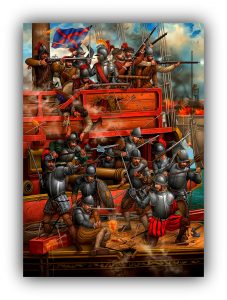
In 1297, a pope had assigned Sardinia to the Aragonese dynasty in Spain. Among the servitude to which that island was subjected, the most important was the military. Engaged in constant wars against its enemies, Spain had an inexhaustible need for troops. For this purpose, recruitment centers had been opened in every region of the empire, even in Sardinia, where he formed the Tercio de Cerdeña. Don John of Austria had the guidance of the Holy League, choosing as his personal guard, on the flagship the 400 musketeers of the Tercio de Cerdeña. Were precisely those Sardinian that rejecting numerous Turkish attacks, and conquering their flagship, gave decisive change to what was happening in the distant October day, the mouth of a gulf at Curzolari islands.
 Meeting Benches World art in all forms
Meeting Benches World art in all forms
